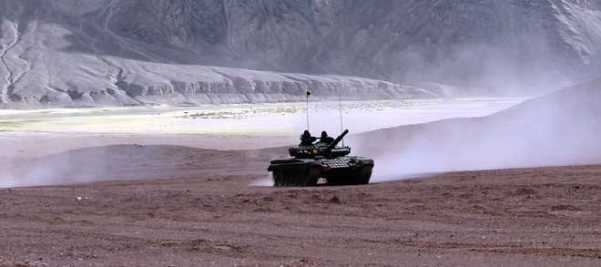India and China have started pulling back armoured elements – tanks and infantry combat vehicles – from heights on the southern bank of Pangong Tso, people familiar with the disengagement plan in New Delhi said.
Troops are still holding positions on these strategic heights, they said on the condition of anonymity after the Chinese defence ministry announced in Beijing that the troops had started to disengage along the Line of Actual Control (LAC) near the salt-water lake.
The reports of withdrawal of the armoured elements from one of the multiple friction points in the East Ladakh sector comes nearly a fortnight after military commanders of the two armies agreed on January 24 to push for an early disengagement of their frontline troops.
In a statement published on the Chinese defence ministry website on 10 February, spokesperson Wu Qian said the frontline units of the Chinese and Indian armed forces have begun to disengage at Pangong lake on February 10 in line with the consensus reached at the 9th round of military commander-level talks.
The troops have begun to disengage “simultaneously and systematically”, Wu was quoted as saying in the statement. The Chinese defence ministry did not share details of the disengagement.
The defence and external affairs ministries in New Delhi have not issued a statement on the movement of the armoured elements.
People familiar with the developments confirmed that there had been some reduction but did not indicate any details. This is seen as the first move towards resolving the nine-month military standoff that started in May last year.
The 9th round of China-India Corps Commander Level meeting was held on the Chinese side of the Moldo-Chushul border meeting point on January 24.
At the meeting, according to a joint release issued the following day, the two sides had “…agreed to push for an early disengagement of the frontline troops. They also agreed to follow the important consensus of their state leaders, maintain the good momentum of dialogue and negotiation, and hold the 10th round of the Corps Commander Level Meeting at an early date to jointly advance de-escalation.”
“The two sides agreed to continue their effective efforts in ensuring the restraint of the frontline troops, stabilise and control the situation along the LAC in the Western Sector of the China-India border, and jointly maintain peace and tranquillity”.













